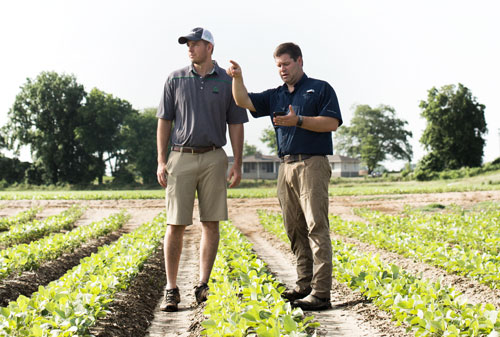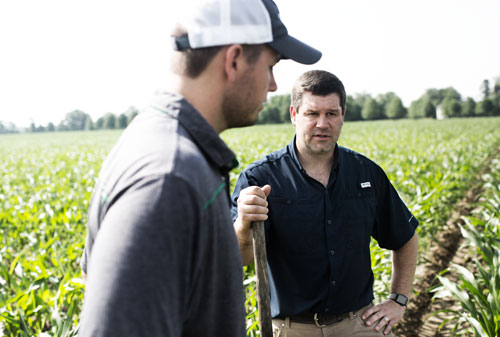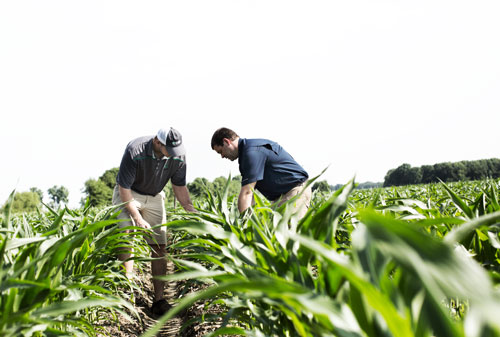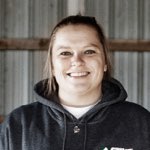MariannaArkansas
For six generations, the Feltons have farmed in Lee County, Arkansas, near Marianna. Their first family member bought their first block of ground in the area in the 1880s. Since that time, each generation has acquired more land, clearing and leveling that ground to what now comprises 8,000 acres of expansive farmland.
Stine® grower Jason Felton and his brother, Trent, are now in charge of the family farm, where they rotate corn, cotton, soybeans and peanuts each year, even finding time to grow and harvest 40 acres of peonies, which they box, package and send to wholesalers across the country.
For their corn and soybeans acres, which represent about 40–50 percent of their operation each year, Jason and Trip have transitioned to Stine®. They started with Stine corn in 2007, growing 300–400 acres at first along with a few competitor brands, but that soon changed after a hard Easter freeze.
“In ’07, we had an Easter freeze. I think it went down to about 27 degrees Easter night,” notes Jason. “We ended up having to replant 100 percent of our corn.”
Instead of opting for some of the lines the competitor brands offered for replant, they switched all 1,000 acres to Stine corn because Stine offered more options and hybrids that have performed well in yield trials.
“So, we ended up replanting about April 24, and it ended up averaging somewhere around 200–205 bushels per acre on the 1,000 acres of corn that we planted a month later than we normally would. It’s been in our operation ever since.”
After some time testing different numbers, they’ve found great success with Stine Agrisure® Viptera® brand corn, especially with earworm control, standability and early pollination.
“We noticed along with Stine being shorter, it’s also stockier, a little bit girthier, and with the root system that it has, we almost never have seen down corn since we switched to all Stine corn,” notes Jason. He adds, “One of the other advantages of the corn is we pollinate really early with these hybrids…That’s a big deal for us because in early to mid-June, we start getting in the upper 90s and the nights in the 80s. So, the faster we pollinate, the better our corn yields seem to be. That’s a huge advantage we have found with our Stine hybrids.”
In addition to their success with Stine corn, the Felton’s have made great strides with Stine soybeans.
“When we first started planting Stine beans, we didn’t know a lot about it, but each year we were trying more varieties. We were never disappointed with the disease package, the yield, the price. And the value seemed to be better than anything else we were getting.”
Jason Felton
Now, the Felton’s exclusively plant Stine on their corn and soybean acres and have even started growing Stine GT27 brand soybeans on their acres.
“This is our first year to grow Stine GT27 — we are growing 4.1 and 4.8 varieties. So far, they look really great. Good emergence — they are really bushing out pretty quick so we are pleased the way it looks so far.”
He adds, “We constantly have a weed battle on our hands, so the better the technology is, the better variety we can use, the better off we are in the future.”



















